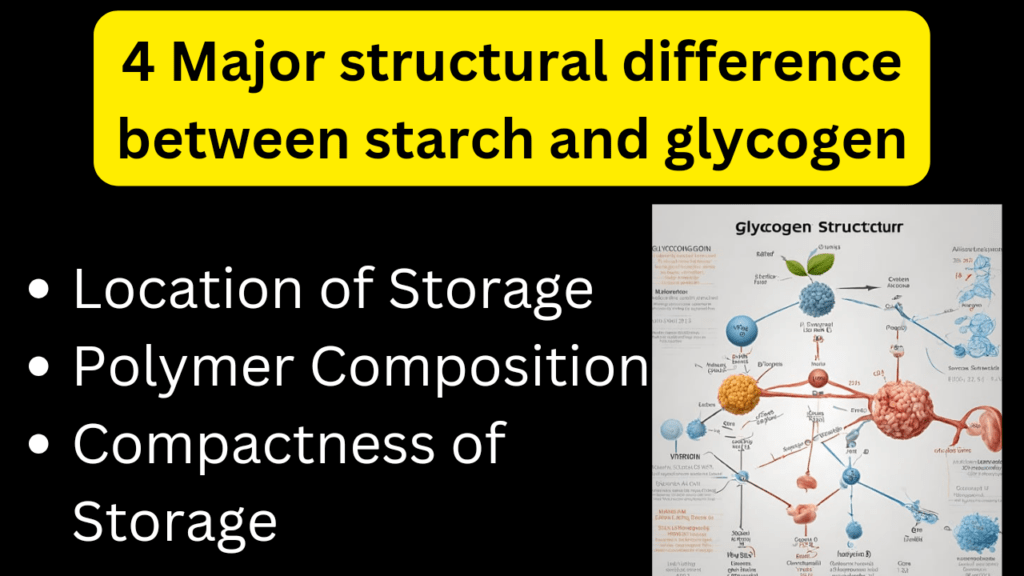Starch and glycogen are two crucial polysaccharides found in the natural world.

Both play vital roles in the storage and release of energy in living organisms. These complex carbohydrates have distinct structural differences that contribute to their specific functions in plants and animals.
In this article, we will explore the major structural differences between starch and glycogen.
- Polymer Composition
- Location of Storage
- Compactness of Storage
- Enzymatic Breakdown
Polymer Composition difference
Starch is predominantly found in plants and serves as a primary energy storage molecule. It consists of two main components: amylose and amylopectin.
Amylose is a linear chain of glucose molecules linked by α-1,4-glycosidic bonds. Amylopectin, on the other hand, is a branched polymer where glucose units are connected through α-1,4-glycosidic bonds in the main chain and α-1,6-glycosidic bonds at branch points.
Glycogen is the animal equivalent of starch and is the primary storage form of glucose in animals, mainly in the liver and muscles.
Unlike starch, glycogen is more highly branched. It contains a central core of glucose units linked by α-1,4-glycosidic bonds, with shorter chains branching out via α-1,6-glycosidic bonds more frequently than in amylopectin.
This increased branching allows for faster and more efficient energy release when needed.
Location of Storage difference
Starch is predominantly found in plant tissues, with the most common storage sites being seeds, roots, and tubers. The primary function of starch in plants is to store energy in the form of glucose for future use.
Glycogen, however, is found in the liver and muscles of animals. It serves as a rapid energy reservoir to meet the immediate energy demands of the organism.
Compactness of Storage difference
Starch granules in plant cells are relatively large and less densely packed, which makes them suitable for long-term storage but less efficient in rapid energy release.
Glycogen, due to its high branching and compact structure, is more suitable for short-term energy storage. This compactness allows for quick access to glucose molecules when the body requires a sudden burst of energy, such as during physical activity.
Enzymatic Breakdown difference
Another key structural difference lies in the enzymes responsible for breaking down starch and glycogen. In plants, enzymes like amylase are required to break the α-1,4-glycosidic and α-1,6-glycosidic bonds of starch during digestion.
In animals, glycogen is primarily broken down by the enzyme glycogen phosphorylase, which targets the α-1,4-glycosidic bonds.